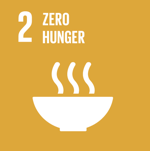Sustainable management of irrigation and fertilization in quinoa
 Argentina
Argentina
 Chile
Chile
 Ecuador
Ecuador
 Peru
Peru
Executive Summary
Adequate water and fertilization management is critical to optimizing yield within limitations of climate and resource availability. Though quinoa is recommended as an efficient crop in terms of water and nitrogen use, an evaluation of responses to these limiting factors at the crop physiology level shows significant gaps between actual yields and those limited by these factors. These gaps expose inefficiencies in crop management that lead to lower profits and reduced food security, particularly for small-scale farmers and subsistence agriculture.
This project aims to improve management and decision-making capacities through generating knowledge under field conditions across a wide geographic range, encompassing ~25 % of the total quinoa cultivation area in South America.
The technological solution
Three tools will be created for quinoa management via the calibration of simulation models: 1) the Cronos-quinoa model, to establish the best combinations of genotypes and sowing dates in each cropping environment, 2) the Aquacrop-quinoa model, to benchmark yield responses to water availability, and 3) a Fertilization Calculator, to estimate nitrogen demand under each water availability scenario.
Farmers, agronomist, technicians and students related to quinoa cultivation will be trained in the use of these tools, which will be made freely available through the web pages of the institutions involved in this proposal.
Results
We expect to reach water-limited yield boundaries through improvements in irrigation and fertilization techniques. Knowledge generated will be combined with the development of online tools freely accesible by farmers, technicians and researchers in the agricultural field. The environmental impact of agriculture arising from the inadequate or excessive use of water and nitrogen will also be reduced. The yield increase linked to more efficient resource use will improve profits and farmers’ quality of life.
Beneficiaries
The beneficiaries of this project are distributed across three countries (Chile, Peru and Ecuador) where the technologies developed by the project will be applicable. Specifically, the Interandean Valleys in Ecuador and low altitude coastal environments from Peru to Southern Chile. There are currently 1560 benefitiaries confirmed: 890 in Chile, 70 in Ecuador and 600 in Peru. For Chile they include: (1) The Institute for Agricultural Development (INDAP) Los Rios, with 500 farmers involved in quinoa production, (2) Agroforestal La Esperanza in Temuco, Chile (20 beneficiaries), (3) the company Promauka in Paredones, O' Higgins (20 beneficiaries), (4) the company Agrogen in Temuco (20 beneficiaries), (5) the Program for Economic Associativity (PAE) from Maule (12 farmers), (6) the Program for Farmers Support at Vilcun (18 farmers) and (7) the Program for Regional Innovation at the Universidad Austral de Chile in Valdivia (250 beneficiaries). For Peru: (8) the company Recrias Americana SAC from Areguipa (20 beneficiaries), (9) the company JIWRA SAC from Arequipa (200 farmers) , (9) the National Institute for Agricultural Technology (INIA) at Cuzco (200 beneficiaries) and (10) the Company Control Union Peru SAC in the Departments of Huancavelica, Ayachucho and Apurimac (300 farmers). Finally, for Ecuador small farmers organized into APROSANAMY, a seed and food producers association (70 farmers distributed between 18 communities)
Sustainable Development Goals

Participating Organizations
Executor
- Universidad de Buenos Aires (UBA) - Argentina
Co-executor
- Instituto de Investigaciones Agropecuarias (INIA) - Chile
- UACH - Chile
- Universidad Nacional Agraria La Molina (UNALM) - Perú
- Universidad Nacional de Loja (UNL) - Ecuador
Associated
- Universidad de Talca (UTALCA) - Chile




